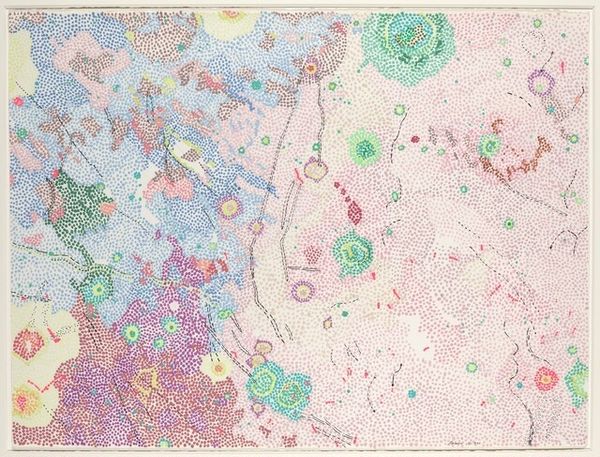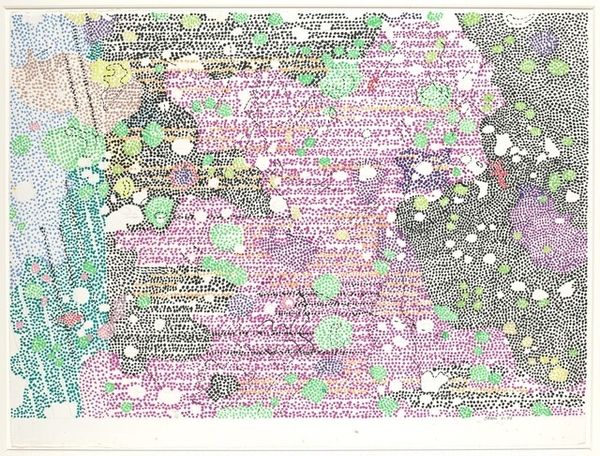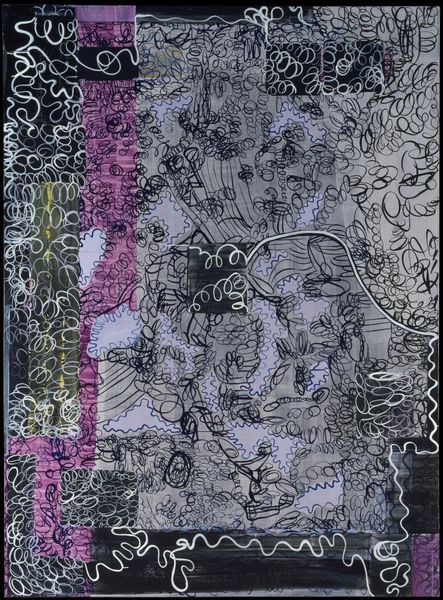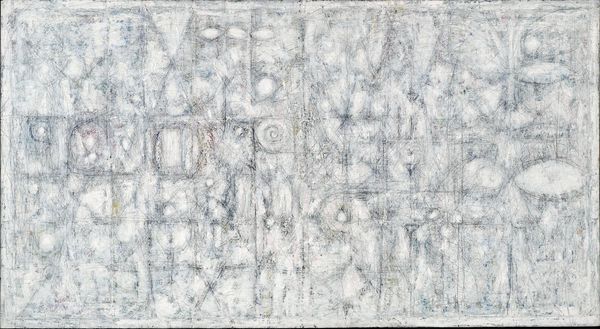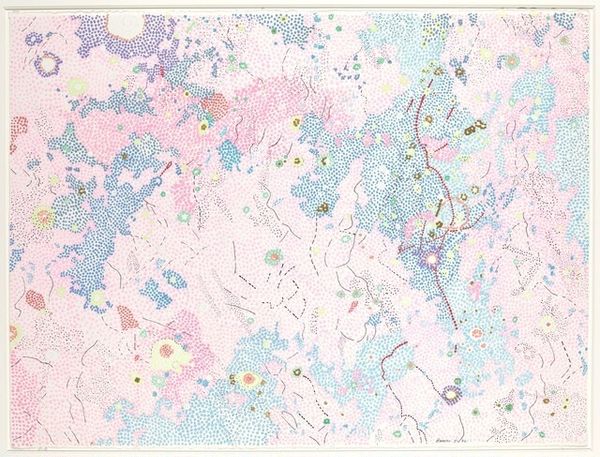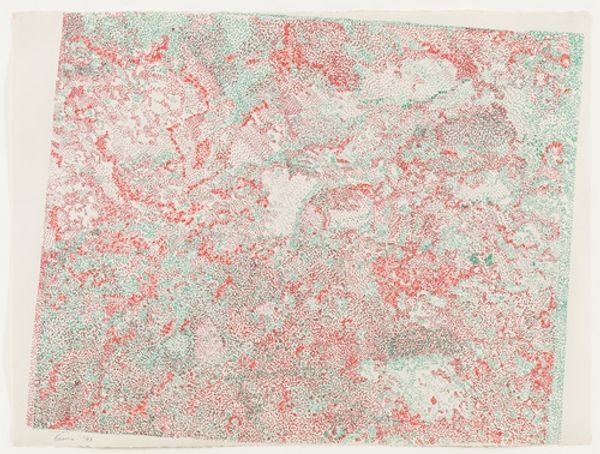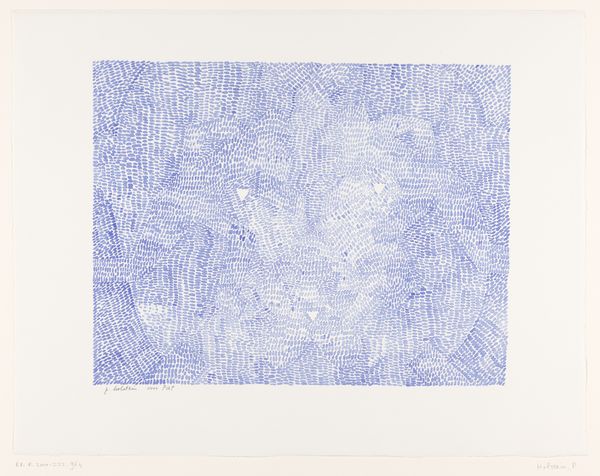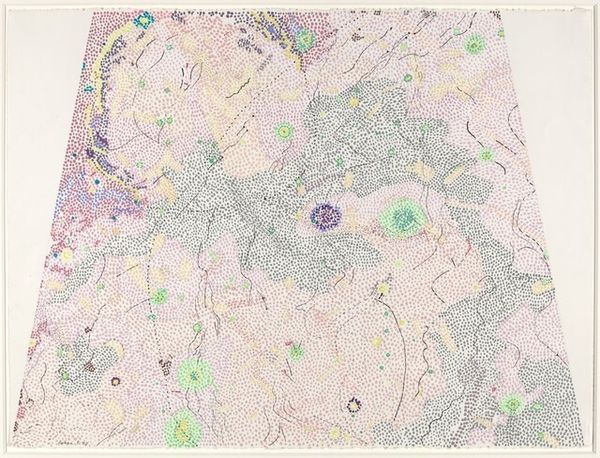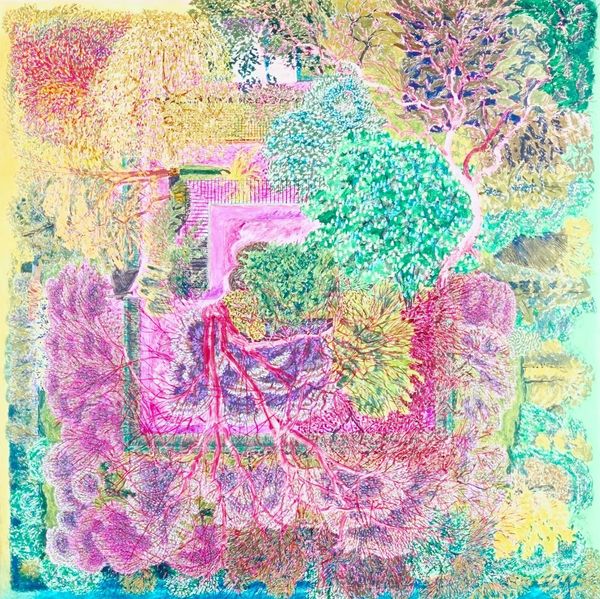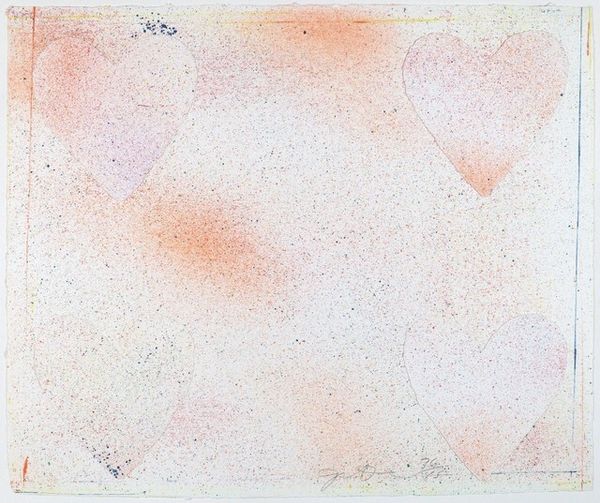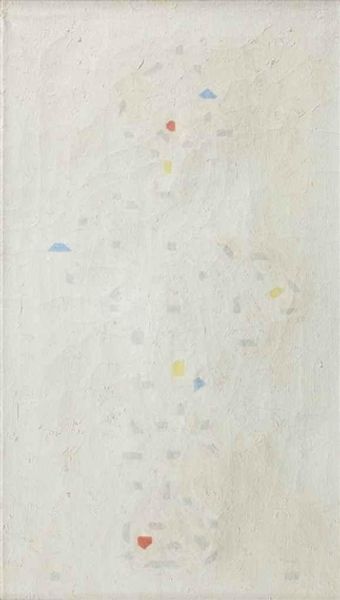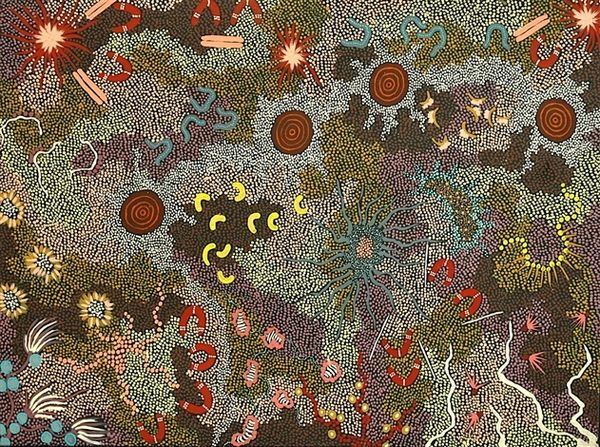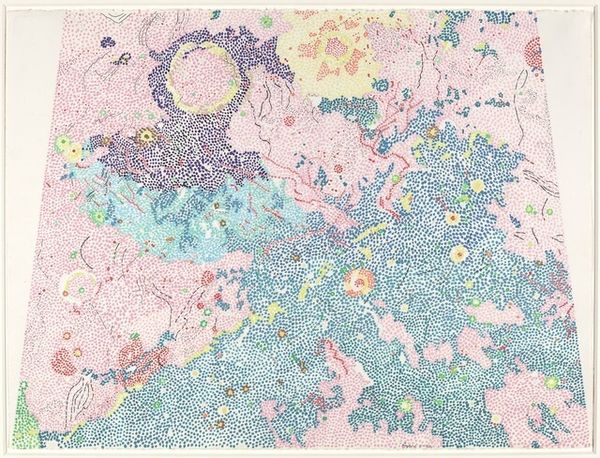
drawing
#
drawing
#
contemporary
#
organic
#
organic pattern
#
geometric-abstraction
#
pen work
Dimensions: overall (appromimate): 57.2 x 76.1 cm (22 1/2 x 29 15/16 in.)
Copyright: National Gallery of Art: CC0 1.0
Editor: We're looking at Nancy Graves' "Fra Mauro Region of the Moon," a drawing from 1972. It's a fascinating collection of colorful dots, almost like a pointillist landscape but...alien. How do you interpret this work? Curator: It’s intriguing, isn’t it? Graves often explored scientific imagery in her work. Looking at this piece, the repetitive dots become almost like a symbolic language, echoing not just a lunar landscape, but our collective understanding of it – pieced together, mediated, a little bit abstract. Editor: A symbolic language? Can you elaborate? Curator: Think about what the moon meant in 1972. Space exploration was at its height; the moon was both a tangible place and a symbol of human aspiration. The dots could represent data points, geological formations, or even just the dreamlike quality of space itself. Notice the recurring shapes. Do they remind you of anything? Editor: They remind me a bit of microorganisms seen through a microscope, perhaps? Curator: Precisely! Graves often blurred boundaries between the macro and micro, reminding us that even the vastness of space is built from smaller components, understood through repeated observations and coded representation. Perhaps these shapes carry the same genetic material of terrestrial shapes, reinforcing the cultural fascination with life and how these shape our dreams. Editor: So, it’s less about literal representation and more about capturing the cultural weight of the moon? Curator: Exactly. The symbolic value of what this means can shift across cultures, creating an interplay between what we are, and what we strive to achieve. Graves encourages us to reflect on the interplay between scientific knowledge, personal experience, and our collective memory of this distant landscape. Editor: I hadn’t considered the dots as symbolic, more as a purely aesthetic choice. Curator: And that’s perfectly valid. Artworks often contain multiple layers of interpretation, both personal and cultural. Hopefully seeing and thinking about these shared images gives you insight on a piece. Editor: Definitely. I'll never see the moon the same way.
Comments
No comments
Be the first to comment and join the conversation on the ultimate creative platform.

